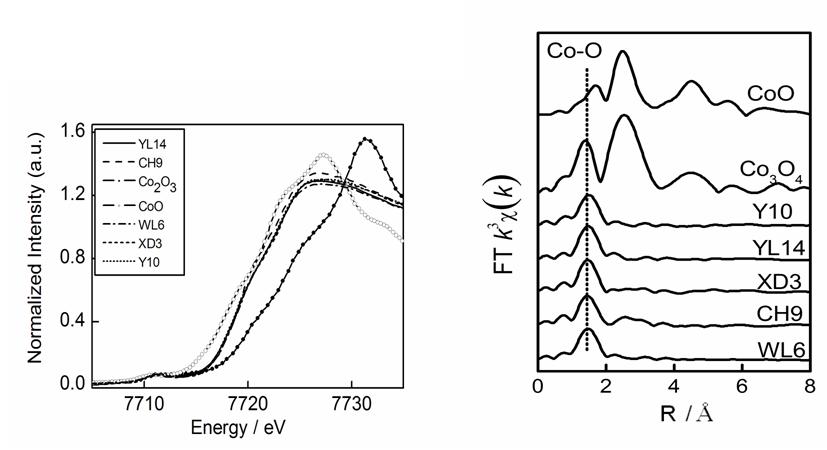| Co speciation in blue decorations of blue-and-white porcelains from Jingdezhen kiln by using XAFS spectroscopy |
| From: PublishDate:2012-06-26 Hits: |
Blue-and-white porcelain is well-known for its skillful techniques and great artistic merit all over the world. It usually designates white porcelain decorated with blue pigment, which is usually cobalt oxide under the glaze. So far, blue-and-white porcelain have been attracting more and more researchers to investigate its manufacturing techniques, the provenance of cobalt blue pigment ore, the dating and authentication, and so on. Coloring origin of the blue color in blue-and-white porcelain is one of these hot topics. Previous studies pointed out there were two factors that influenced the tone of blue color in blue-and-white porcelains. One was the transition elements which contained in the blue decorations, including cobalt, iron and manganese. The content of these elements and their ratio had a large influence on the blue color. Manufacturing techniques, such as pretreatment of the raw materials, the temperature, atmosphere and time during the firing, was another factor. And the latter influence the blue color by controlling the oxidation state and chemical environment of these transition elements. Thus, a thorough knowledge of speciation of transition elements (i.e. oxidation state, chemical environment) is not only crucial for understanding the coloring origin of blue color but also provide an important information for discussing issues about the manufacturing techniques, the provenance of cobalt pigment ore, the cultural exchange between the east and west. Since the layer of blue pigments was between the glaze and body, little is known about the elements’ oxidation and chemical environment which is directly correlated to the origin of blue color. X-ray absorption fine structure (XAFS) is an atomic probe and has demonstrated its power to investigate the oxidation and local structure of transition element at the molecular scale in recent years. For further understanding the coloring origin of blue decorations, Lihua Wang, supervised by Changsui Wang, from Department of Scientific History and Archaeometry, Graduate University of the Chinese Academy of Sciences carried out Co K-edge XAFS measurements at BSRF to characterize the oxidation state and chemical environment of Co element contained in blue decorations of blue-and-white porcelains manufactured by Jingdezhen official kiln during the Yuan and Ming dynasties. XANES spectra showed that cobalt was present as both divalent and trivalent ions and the ratios of Co2+/Co3+ were almost similar for all samples with different historical periods. EXAFS analysis indicated that cobalt atom was situated in both octahedral and tetrahedral sites. Considering the empirical optical absorption in visible region, it was assumed that divalent ions located at tetrahedral sites made the main contribution to the blue color. Their research has been published in Journal of Analytical Atomic Spectrometry in September of 2011(J. Anal. At. Spectrom., 2011, 26, 1796-1801).
Figure (left) Normalized Co K-edge XANES spectra for blue-and-white porcelain shards as compared with reference materials. (right) k3-weighted, phase uncorrected FT of all blue-and-white porcelains and reference materials.
Article: Lihua Wang and Changsui Wang*, Co speciation in blue decorations of blue-and-white porcelains from Jingdezhen kiln by using XAFS spectroscopy, J. Anal. At. Spectrom., 2011, 26, 1796–1801. |
|
|
| Chinese
Science Highlights
Home /
Copyright © 2011 - 2012 Beijing Synchrotron Radiation Facility


